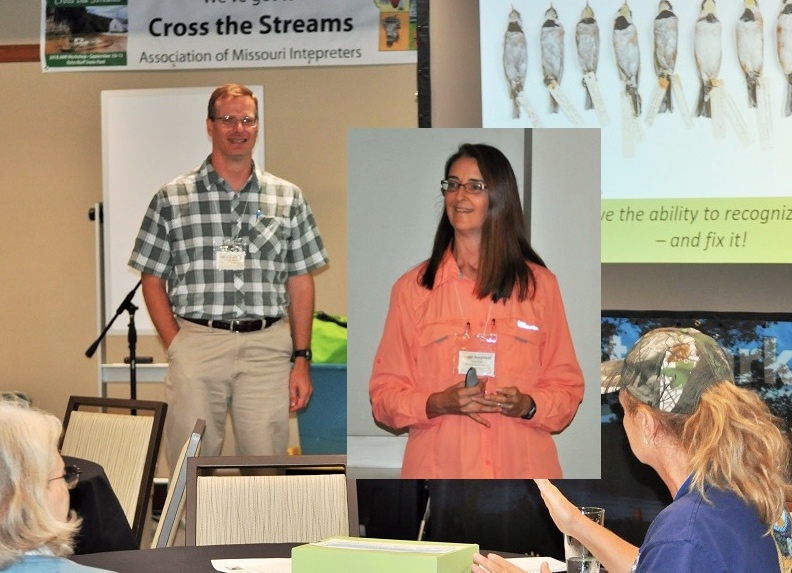 Aaron and Angie Jungbluth were participants at the November 2017 EtS course held in Spokane, WA, just prior to the National Association for Interpretation’s national conference. They are volunteer Conservation Naturalists in their home state of Missouri. They developed this training material to be included as a regular part of their monthly volunteer coordination meetings. They expect the material will also be useful in several other venues in their vicinity.
Aaron and Angie Jungbluth were participants at the November 2017 EtS course held in Spokane, WA, just prior to the National Association for Interpretation’s national conference. They are volunteer Conservation Naturalists in their home state of Missouri. They developed this training material to be included as a regular part of their monthly volunteer coordination meetings. They expect the material will also be useful in several other venues in their vicinity.
A Climate Training program
Purpose of the Training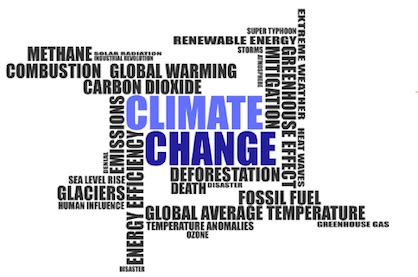
Since their audiences all involve working with the public in the conservation field, Aaron and Angie's purpose was two-fold. First, they wanted to provide the latest scientific information on climate change and where to go for current, non-biased resources. And second, they wanted to allow participants to experience several sample interpretive techniques to help them share the topic effectively with others. It was a good way of extending what was learned at the EtS course and NAI conference back to the conservation public educators in the St. Louis region.
The current plan is to host tailored presentations for the general public beginning in the Fall of 2018.
Program Content
 The main presentation was about 60 minutes in length, and is available below as both powerpoint and pdf files. There were several key components of content that they wanted to incorporate into this presentation. To keep it interactive, they sprinkled ten polling questions from the Yale Six America’s Climate study throughout the program, specific questions relevant to the theme of each section being discussed. Participants were asked to fill out the “Climate Change Things You Can Do” table as they followed along. (See Handouts below.) The first action for the participants was to answer how do they feel about the polling question…yes or no. The second action was what percentage of people in the U.S. in 2016 agreed with that polling question. They then immediately revealed the polling responses and moved into that section of the presentation.
The main presentation was about 60 minutes in length, and is available below as both powerpoint and pdf files. There were several key components of content that they wanted to incorporate into this presentation. To keep it interactive, they sprinkled ten polling questions from the Yale Six America’s Climate study throughout the program, specific questions relevant to the theme of each section being discussed. Participants were asked to fill out the “Climate Change Things You Can Do” table as they followed along. (See Handouts below.) The first action for the participants was to answer how do they feel about the polling question…yes or no. The second action was what percentage of people in the U.S. in 2016 agreed with that polling question. They then immediately revealed the polling responses and moved into that section of the presentation.
Climate change can appear to be a daunting issue and participants might feel helpless about it. The “Things You Can Do” may help to give them ideas of the little things (and some big things) they could do at home to help with the current situation. The motivation might be several things (to reduce pollution or to save money), but the outcome is the same - it all helps the environment. To mix it up during the presentation, there’s a “simple” carbon cycle activity included. This activity works for both kids and adults. It demonstrates how the carbon cycle functions in nature, how people contribute to it as individuals, and how the chemistry of the planet is changing from the burning of fossil fuels. In the latter part of the activity, Person A and Person B do (or don’t do) a few of the suggestions on the “Things You Can Do” handout…which was another way to have participants reviewing the handout and changing what they do on their own.
To mix it up during the presentation, there’s a “simple” carbon cycle activity included. This activity works for both kids and adults. It demonstrates how the carbon cycle functions in nature, how people contribute to it as individuals, and how the chemistry of the planet is changing from the burning of fossil fuels. In the latter part of the activity, Person A and Person B do (or don’t do) a few of the suggestions on the “Things You Can Do” handout…which was another way to have participants reviewing the handout and changing what they do on their own.
Thanks to a webinar that Aaron and Angie attended by Dr. Katharine Hayhoe, another approach was included about Discussing Tough Topics with audiences who may not share the same thoughts as you, and the topic of climate change often fits that mold. They also explore the techniques of Audience-Centered Engagement, which involve giving the participants more agency to share and express their ideas around the topic. To facilitate this and have participants settle their thoughts after the presentation, they started with the participants journaling on the four questions on the bottom of the Yale Climate Poll handout. Once complete, those were shared by way of eight stakeholders in the discussion of climate change. Participants were asked to pick one of the stakeholders roles that they were not aligned or familiar with, and they divided up into small groups of similar stakeholders. One person then read aloud the additional information provided on the handout for their stakeholder, and they began to discuss the five questions at the bottom of the handout amongst their group. After about 20 minutes, the whole group was reconvened and each breakout shared one issue they attempted to solve with their solution. The resulting discussion was carefully moderated to encourage and reveal positive outcomes for all involved. (See Handouts below.)
The presentation includes a wide variety of non-biased resources for the participants to learn more about climate change on their own. Participants are encouraged to look up websites they can trust, be it federal agencies, world organizations, or non-profit organizations. Several citizen scientist programs are also referenced that relate to climate change and additional scholarly websites or programs are referenced throughout the presentation. (See Climate Change Resources handout below.)
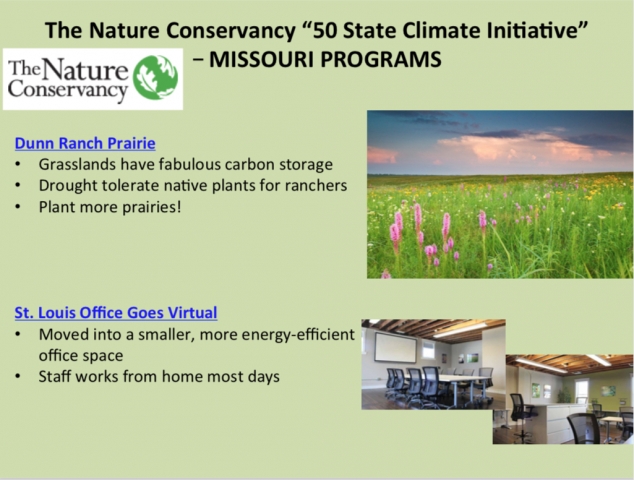
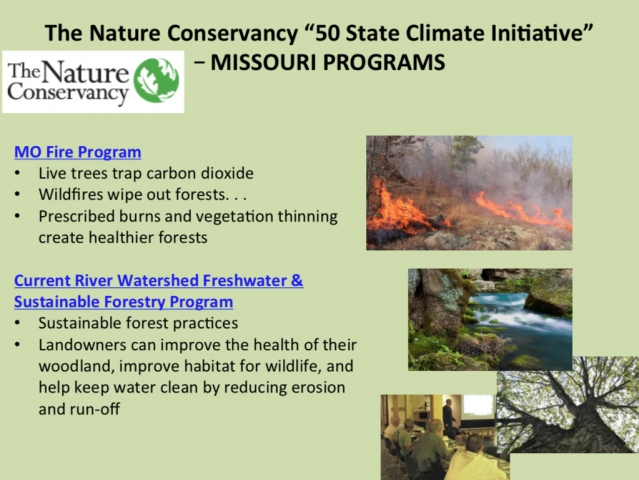
We’ll post additional details and results in the future, as this curriculum evolves.
Related References:
Climate Change Handouts:
![]() Carbon-Cycle-Activity.docx
Carbon-Cycle-Activity.docx
![]() Climate-Change-Things-You-Can-Do.docx
Climate-Change-Things-You-Can-Do.docx
![]() How-To-Talk-About-Polarized-Issues.docx
How-To-Talk-About-Polarized-Issues.docx
![]() Climate-Change-Stakeholders.docx
Climate-Change-Stakeholders.docx
![]() Climate-Change-Resources.docx
Climate-Change-Resources.docx
Presentation (PDF version in segments):
![]() Climate_Change_Program_Part_1.pdf
Climate_Change_Program_Part_1.pdf
![]() Climate_Change_Program_Part_2.pdf
Climate_Change_Program_Part_2.pdf
Presentation (ppt version in downloadable segments):
![]() Climate_Change_Program_Part_1.pptx
Climate_Change_Program_Part_1.pptx
![]() Climate_Change_Program_Part_2.pptx
Climate_Change_Program_Part_2.pptx
![]() Climate_Change_Program_Part_3.pptx
Climate_Change_Program_Part_3.pptx
![]() Climate_Change_Program_Part_4.pptx
Climate_Change_Program_Part_4.pptx
For more details about this training program:
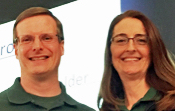 Aaron and Angie Jungbluth
Aaron and Angie Jungbluth
Volunteer Conservation Naturalists
This email address is being protected from spambots. You need JavaScript enabled to view it.
This email address is being protected from spambots. You need JavaScript enabled to view it.
